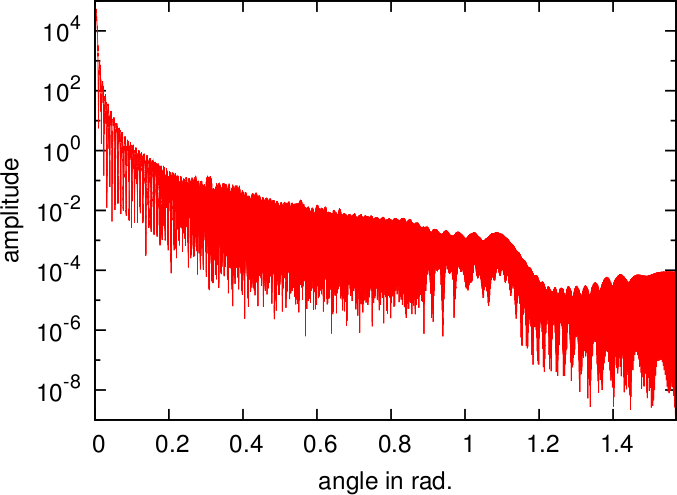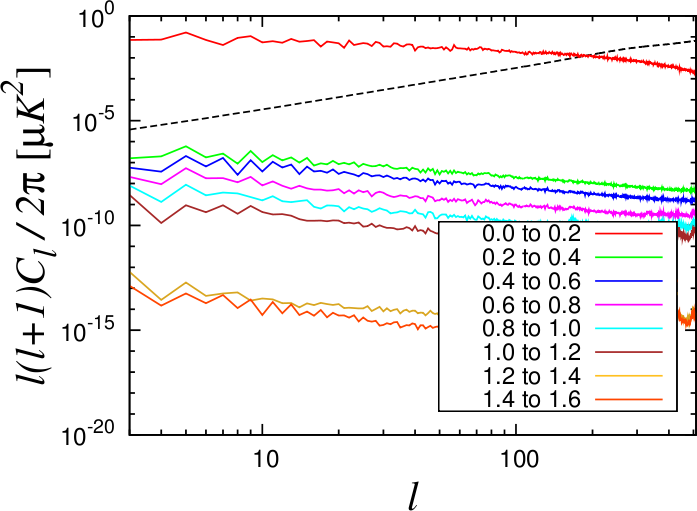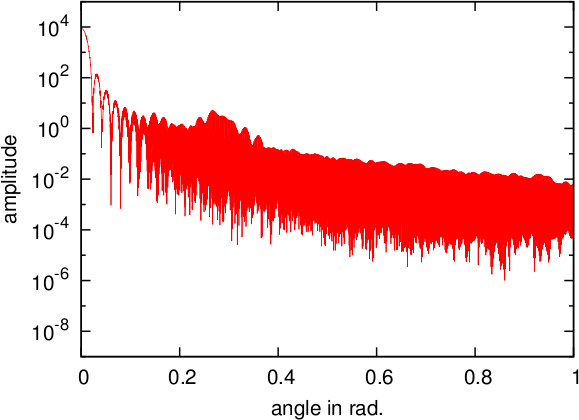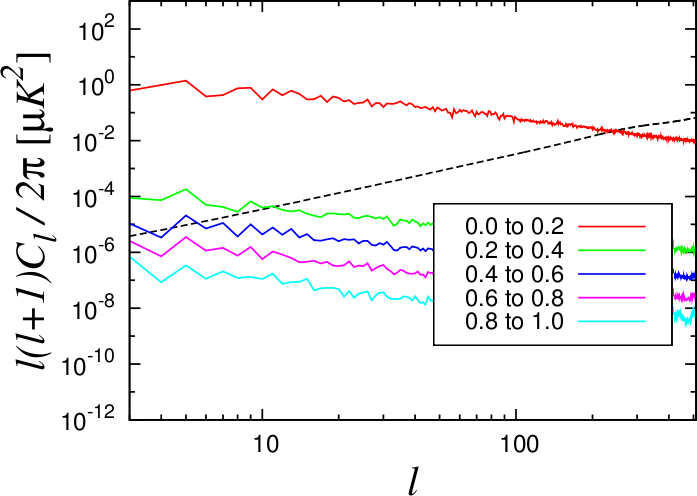Requirement analysis for LiteBIRD’s optical system
JAXA Supercomputer System Annual Report April 2017-March 2018
Report Number: R17EACA34
Subject Category: JSS2 Inter-University Research
- Responsible Representative: Ryo Nagata, High Energy Accelerator Research Organization (KEK)
- Contact Information: Ryo Nagata rnagata@post.kek.jp
- Members: Ryo Nagata
Abstract
Primordial gravitational wave background is generically predicted by cosmic inflation theories. Its amplitude indicates the energy scale of cosmic inflation. LiteBIRD maps the polarization of microwave background sky to detect the signal of the gravitational waves. Since the signal of gravitational wave origin (B-mode pol.) is expected to be much weaker than that of primordial density fluctuation origin which has been already observed, it is essentially important to identify and mitigate systematic errors.
Radiation in-flow through beam far sidelobes is one of the largest contaminants which potentially gives major impacts on Galactic foreground separation. By performing full beam convolution simulations, we quantitatively discuss about systematic errors from such beam imperfection.
Reference URL
Please refer to ‘LiteBIRD: Lite (Light) satellite for the studies of B-mode polarization and Inflation from cosmic background Radiation Detection.‘.
Reasons for using JSS2
Since LiteBIRD will achieve scan observations for full sky polarization mapping, the beam convolution is repeated at the frequency of about 20Hz (and for the period of one year). The beam functions, which are based on physical optics calculations (by use of GRASP), spread through almost the entire sky with arcminute resolution. For every sampling, integrands are evaluated on O(10^6) grid points. The integrations with incessant coordinate transformations require a high performance computing resource.
Achievements of the Year
Our simulation suite consists of computation of scan, beam convolution, and map making. We performed the simulations by assuming a 100GHz frequency band, where the microwave background polarization is relatively intense, and a 40GHz frequency band, where Galactic synchrotron radiation is dominant. The contamination leaked from Galactic plane through beam sidelobes was evaluated as a function of locations on a beam map.
(Fig.1) shows the beam function used for the 100GHz case which is plotted against the angular distance from the peak location. The sidelobe amplitude rapidly falls down to -50dB by 0.2 radian beyond which it gently reduces. By using the beam pattern and a 100GHz foreground sky model, we obtained the simulation result (angular power spectrum) shown in (Fig.2). The power of the contamination leaked through sidelobes beyond 0.2 radian is about 10% of the lensing B-mode level (dashed curve). This is suggesting the possibility of severe biasing to the signal detection of primordial gravitational waves.
(Fig.3) shows the beam function used for the 40GHz case and (Fig.4) is the simulation result by use of the beam pattern and a 40GHz foreground sky model. The contamination level is larger than that in the 100GHz case, because Galactic synchrotron radiation in the band is much more intense than the microwave background polarization and also the sidelobe amplitude of the 40GHz beam pattern is larger than that in the 100GHz beam pattern. Since an assumed detector pixel is located at an edge of LiteBIRD’s focal plane, the beam pattern has anisotropic structures one of which exhibits a large bump at 0.2~0.4 radian from the beam peak. However, it was found to have no major contribution to the contamination.
The far sidelobe requirement for LIteBIRD’s optical system is that it shall be calibrated at the precision level of -60dB. To confirm the robustness of our conclusion, we also performed simulations with higher angular resolution for checking numerical convergence and simulations with foreground maps masked in advance for identification of the contaminant.
Publications
■ Presentations
1)Ryo Nagata, “On the systematic effects of LiteBIRD observation X”, Astronomical Society of Japan 2017 autumn annual meeting
2)Ryo Nagata, “On the systematic effects of LiteBIRD observation XI”, Astronomical Society of Japan 2018 spring annual meeting
■ URLs for the Research Results on the Web
1)http://litebird.jp/eng/
Usage of JSS2
Computational Information
- Process Parallelization Methods: MPI
- Thread Parallelization Methods: OpenMP
- Number of Processes: 32
- Elapsed Time per Case: 2.50 hours
Resources Used
Fraction of Usage in Total Resources*1(%): 0.25
Details
Please refer to System Configuration of JSS2 for the system configuration and major specifications of JSS2.
| System Name | Amount of Core Time(core x hours) | Fraction of Usage*2(%) |
|---|---|---|
| SORA-MA | 2,045,870.27 | 0.27 |
| SORA-PP | 18.72 | 0.00 |
| SORA-LM | 0.00 | 0.00 |
| SORA-TPP | 0.00 | 0.00 |
| File System Name | Storage Assigned(GiB) | Fraction of Usage*2(%) |
|---|---|---|
| /home | 009.54 | 0.01 |
| /data | 1,907.35 | 0.04 |
| /ltmp | 1,953.13 | 0.15 |
| Archiver Name | Storage Used(TiB) | Fraction of Usage*2(%) |
|---|---|---|
| J-SPACE | 0.00 | 0.00 |
*1: Fraction of Usage in Total Resources: Weighted average of three resource types (Computing, File System, and Archiver).
*2: Fraction of Usage:Percentage of usage relative to each resource used in one year.
JAXA Supercomputer System Annual Report April 2017-March 2018






